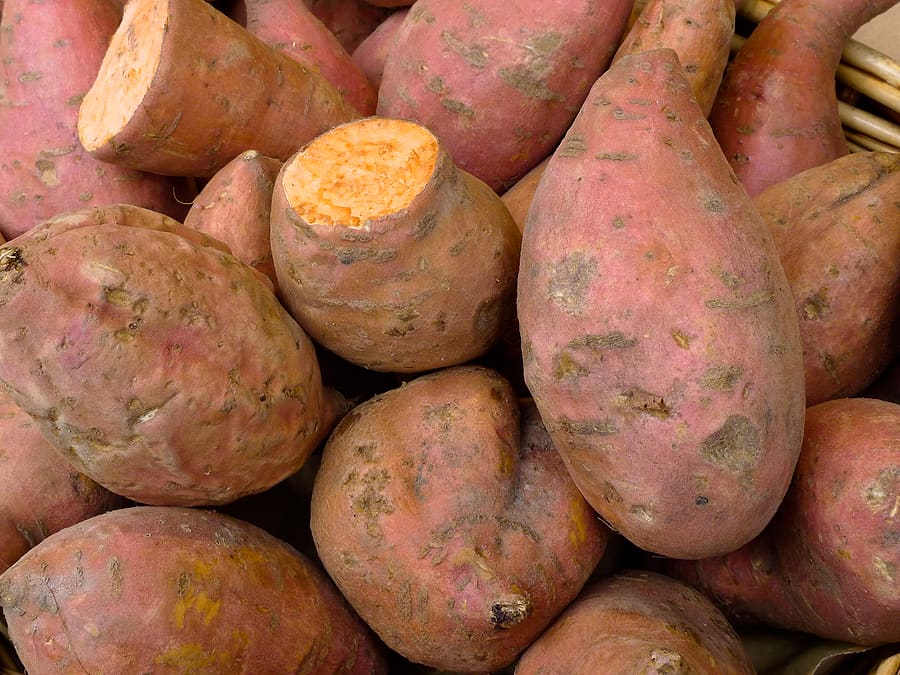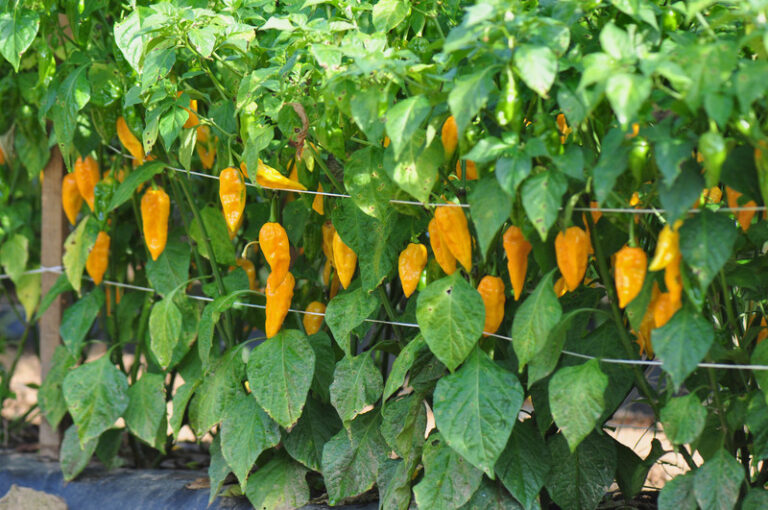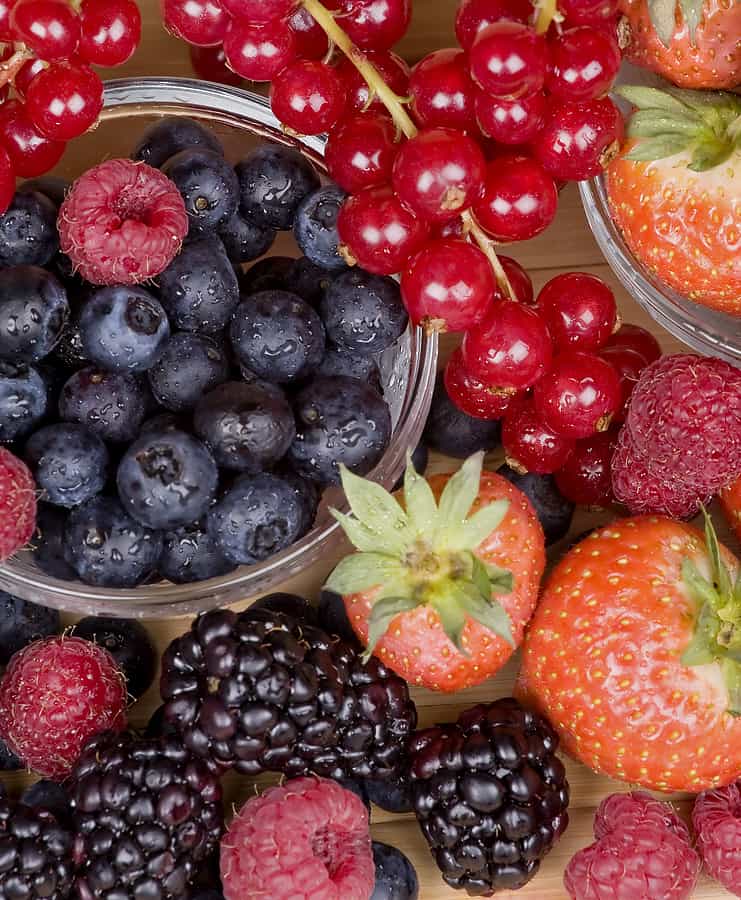How to Harvest and Store Sweet Potatoes
Harvest sweet potatoes as soon as they are big enough to eat—usually when the ends of the vines begin to turn yellow.
Harvest sweet potatoes before the vines are touched by frost. Frost can damage the tubers below.
Related articles:
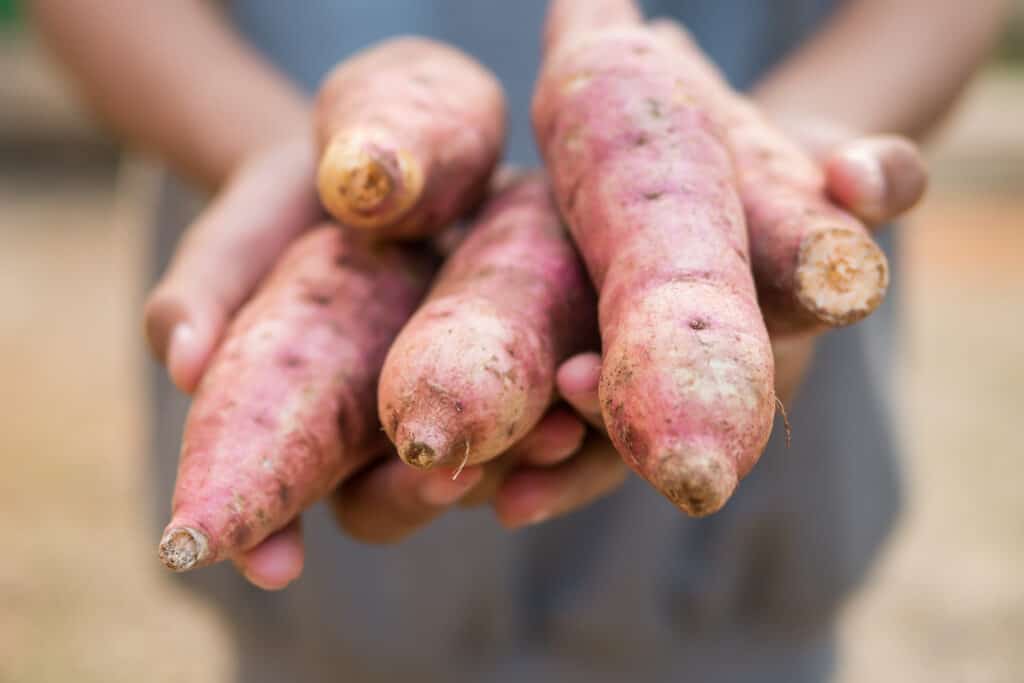
When to harvest sweet potatoes
- Most sweet potato varieties are ready to harvest 95 to 120 days after transplanting. But smaller tubers—called “baby bakers”—can be lifted sooner if they are big enough to eat.
- Lift a few tubers to make sure they are the right size before you dig up the whole patch.
- Sweet potatoes are tropical. Lift your crop before the first frost. Sweet potato roots will continue to grow until frost kills the vines.
- Lift the crop if a hard frost is predicted and before the soil temperature drops to 50°F (10°C). A hard frost can cause damage to roots near the surface. If you can’t harvest your crop before frost, mulch the patch heavily with straw or fallen leaves.
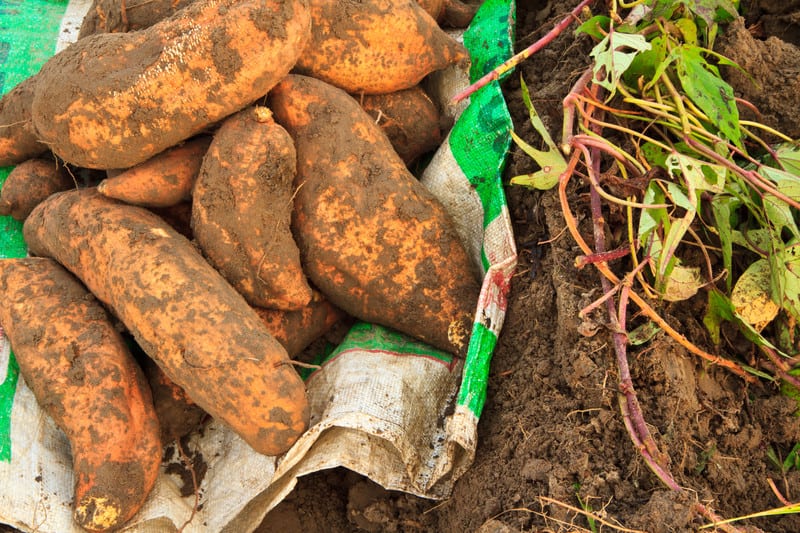
How to harvest sweet potatoes
- Sweet potatoes tend to grow near the surface. Dig carefully to avoid bruising the tubers; bruising can lead to rot. To find the crown of the plant, you may want to trim back the vines.
- Cut or trim the vines two or three days before harvest; this will help toughen the skins and help reduce skinning the roots at harvest. Minor nicks or cuts can cause tubers to decay.
- To lift sweet potatoes, find the crown of the plant and then use a hand or garden fork to loosen the soil in an 18-inch (46 cm) wide circle around the plant.
- Lift the crown and use your hands to unearth the tubers.
- Sweet potatoes should be handled as little as possible to prevent bruising and skinning. Use cotton gloves to reduce skinning during harvest.
- Sweet potatoes are not very sweet when first dug. To sweeten, they need a period to sit and cure.
How to cure sweet potatoes
- To cure a sweet potato, shake off the soil then lay the tuber in a warm (80°F to 90°F/26-32°C), well-ventilated place for about 10 days, longer if the air temperature is cooler.
- Sweet potatoes should be cured with high relative humidity (85-90 percent); curing tubers in perforated plastic bags will keep the humidity high. As roots cure starch will be converted to sugar and the tubers will become sweeter.
- Uncured sweet potatoes do not bake well.
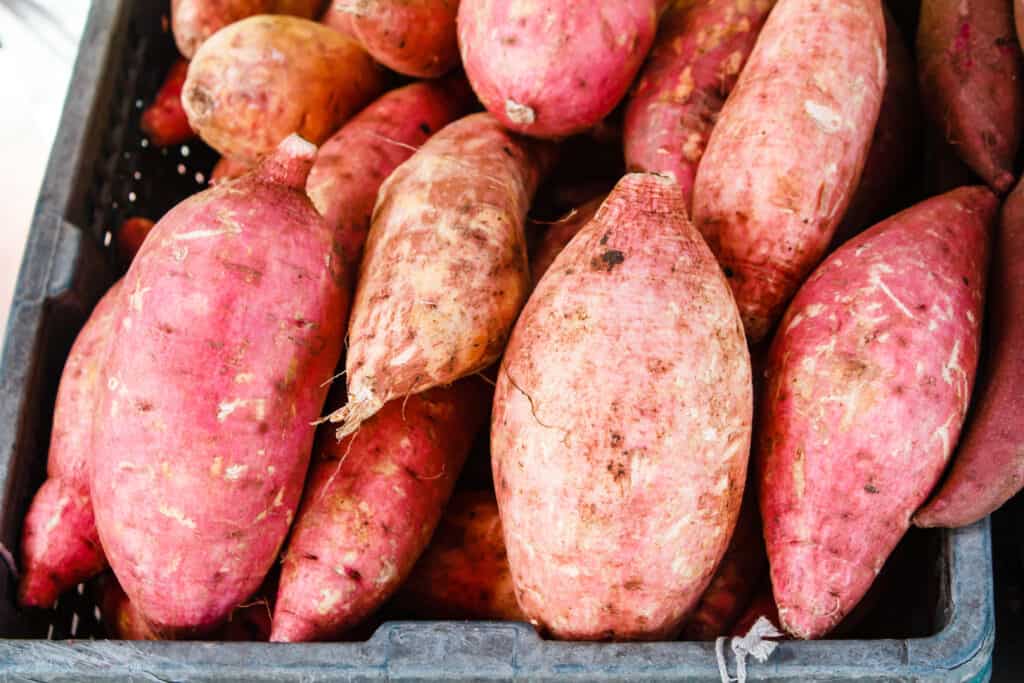
How to store sweet potatoes
- Store sweet potatoes after curing in a cool, dark place at about 60°F (16°C). Do not refrigerate or store sweet potatoes below 50°F (10°C).
- Store only sound, whole roots that are free from disease and insect damage. Use cut pieces and damaged roots as soon as possible; do not store damaged roots.
- Store sweet potatoes in a single layer; wrap the tubers individually in newspaper.
- The tubers should keep for 4 to 6 months in a spot that is 55° to 65°F.
Related articles:
How to Plant and Grow Sweet Potatoes
Sweet Potato Plant Starting Tips
How to Harvest and Store Sweet Potatoes
Seven Ways to Cook and Serve Sweet Potatoes
Sweet Potato Growing Problems: Troubleshooting
Garden Planning Books at Amazon:
- Vegetable Garden Almanac & Planner
- Kitchen Garden Grower’s Guide Vegetable Encyclopedia
- Vegetable Garden Grower’s Guide
- Tomato Grower’s Answer Book
More harvest tips:
Learn when and how to harvest your favorite vegetables for the best flavor and texture. Get storage tips for each crop. Click on the vegetable you are growing below.
- Artichoke
- Arugula
- Asparagus
- Beans
- Beets
- Broccoli
- Brussels Sprouts
- Cabbage
- Cantaloupe — Melons
- Carrots
- Cauliflower
- Celery
- Chard
- Collards
- Corn, Sweet
- Cucumbers
- Eggplant
- Endive and Escarole
- Garlic
- Jerusalem Artichoke
- Kale
- Kohlrabi
- Leeks
- Lettuce
- Melons
- Okra
- Onions
- Parsnips
- Peas
- Peppers
- Potatoes
- Pumpkins
- Radicchio
- Rhubarb
- Rutabaga
- Spinach
- Squash, Summer
- Squash, Winter
- Sunchokes
- Sweet Potato
- Swiss Chard
- Tomatillo
- Tomatoes
- Turnips
- Watermelon

